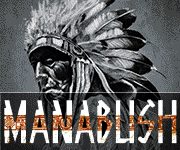thanks!
there references in design here though are totally multi cultural (there is as yet no celtic/viking! - though I understand why you think their might be

)
The axe on Tamahaac is a Tomahawk (tamahaac is another spelling/pronounciaton of tomahawk)
The toothed weapon on Kona Paka is a Leimano (a hawaiian shark toothed axe like club - and indeed Kona is hawaiian coffee and Paka is Hawaiian for tobacco ... as a side note Ganja in Hawaii is called "Paka Loco")
the dual Axes on ParaXu are Parashu's (which is how we pronounce ParaXu) - a sanskrit word for an indian battle axe.
the general background is Polynesian artwork

tho from the segment you can see .. it does kind of look a bit celtic


















